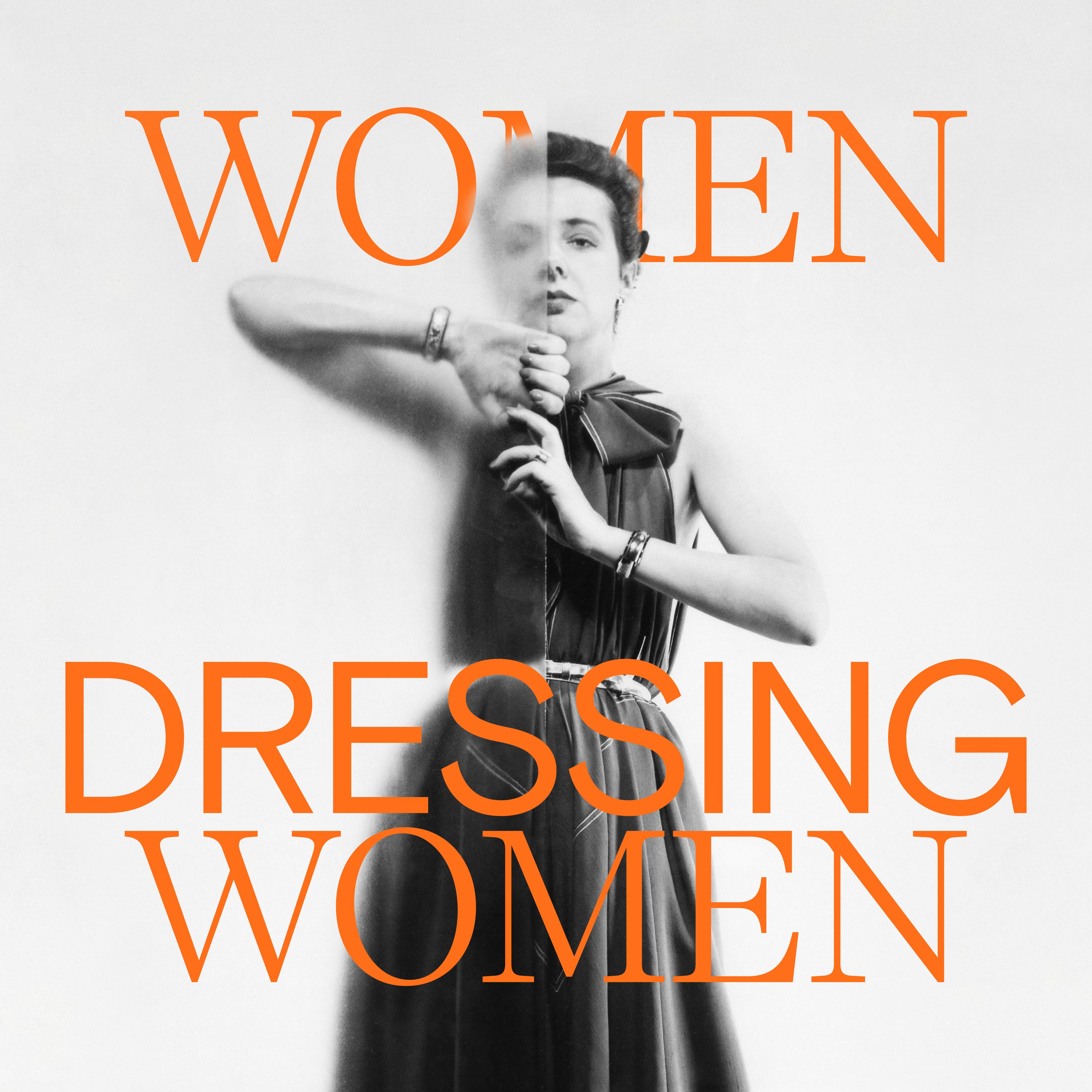Introduction
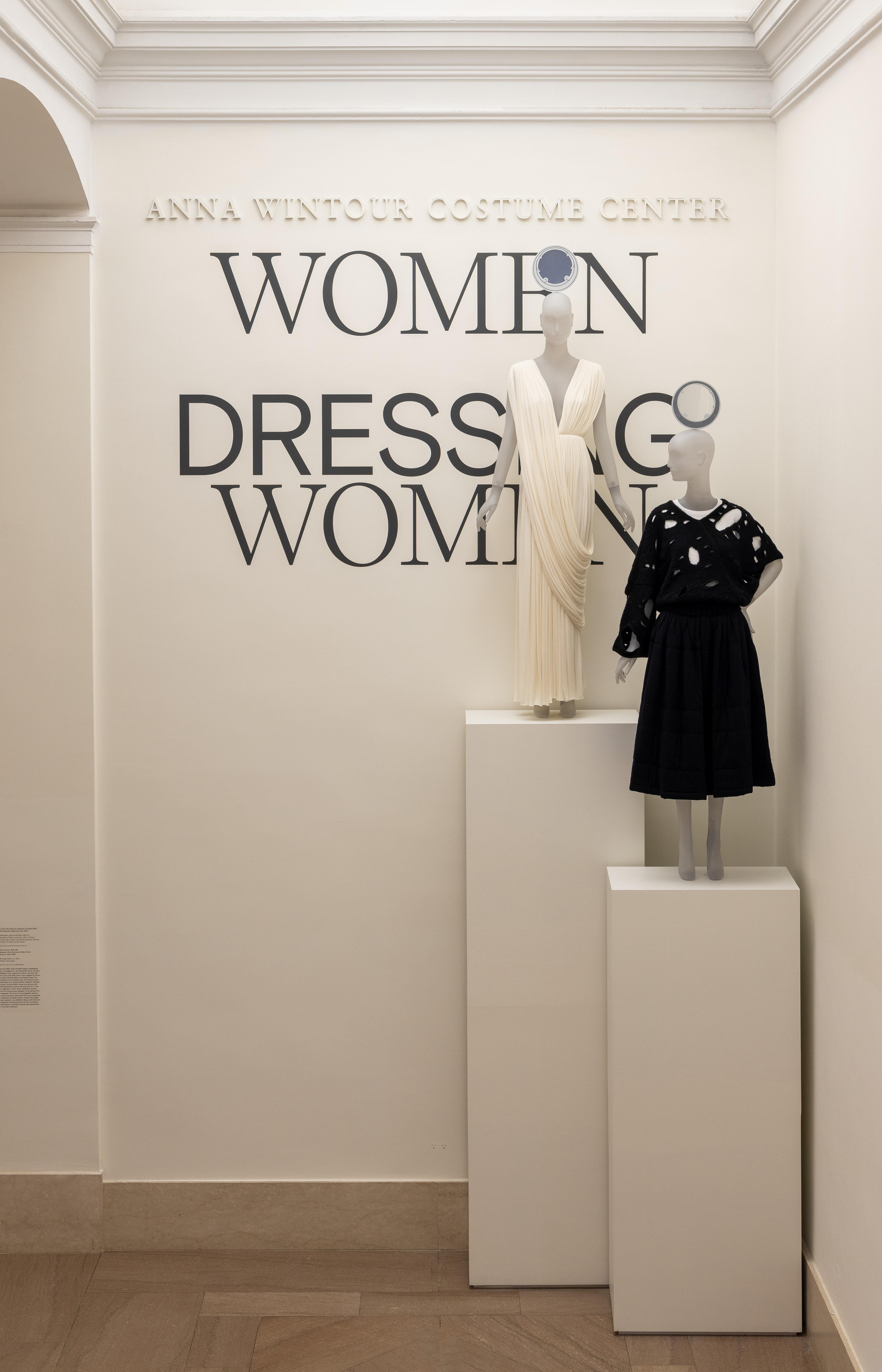
Women Dressing Women honors the contributions of women fashion designers represented in The Costume Institute collection, tracing a lineage of makers from the turn of the twentieth century to the present day by highlighting celebrated couturiers, emerging voices, and forgotten figures alike. Among their diverse experiences and creative practices, they share a commonality in that they design garments for people who identify as women. As such, they are women who dress women in the embodied and performative sense of the verb. Their achievements are cultural as well as material, artistic as well as technical, conceptual as well as practical.

The exhibition is anchored by four key notions that underlie the historical trajectory of women working in fashion: anonymity, visibility, agency, and absence/omission. While the center sections explore stories of progress and success for women designers, the first and last acknowledge some of the challenges that women have encountered in navigating the fashion system—functioning as a prologue and epilogue of sorts that signal an ongoing conversation rather than a complete history.
Though the immeasurable accomplishments of women fashion designers are impossible to contain within one exhibition, this show provides an opportunity to consider the larger canon alongside our own collecting and exhibiting practices. Like the broader Museum, The Costume Institute collection is a continuous work in progress. More than a dozen acquisitions were made for this exhibition, including works from designers who are newly represented in the collection and clothing made for a variety of body types.
I. Anonymity
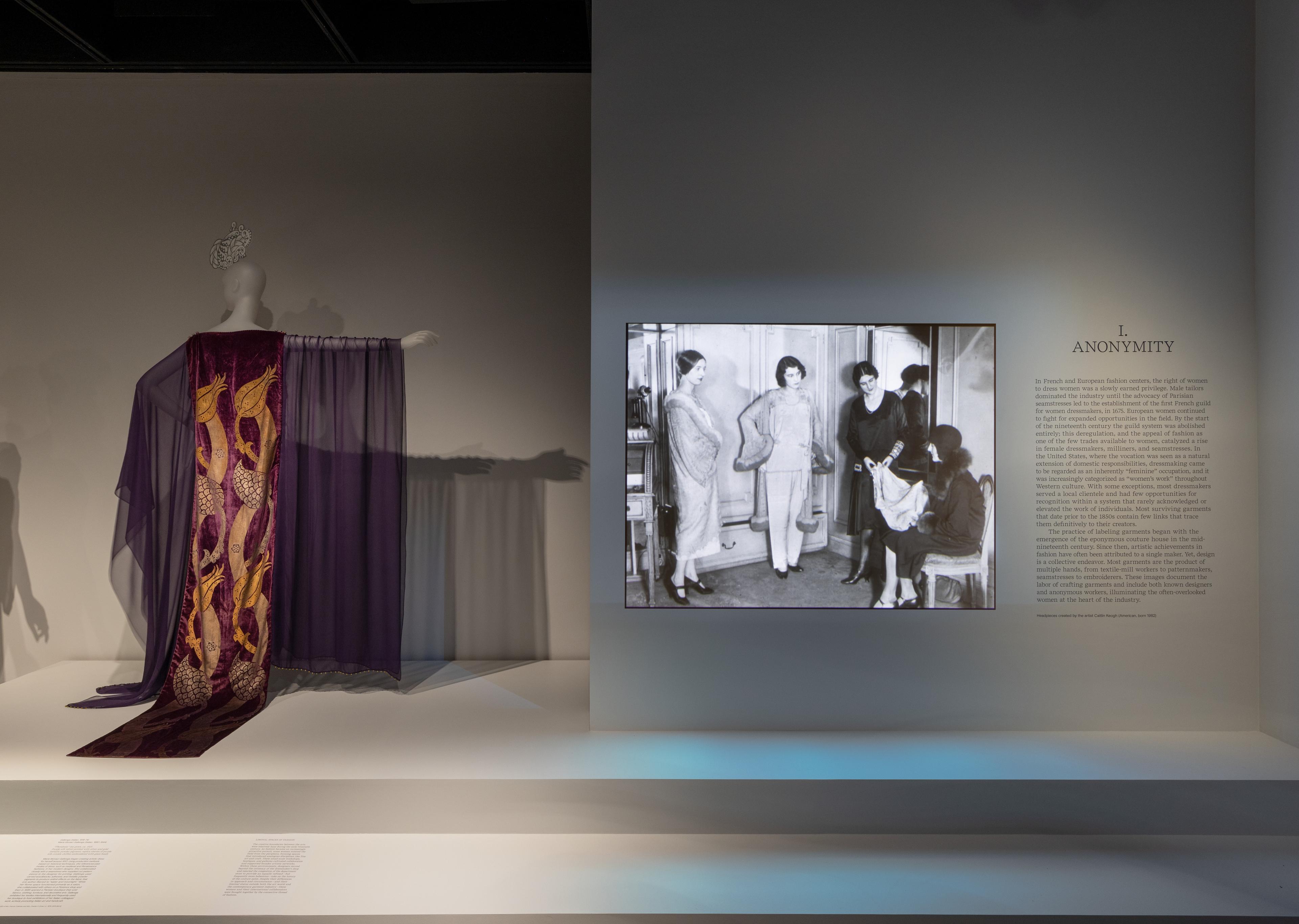
In French and European fashion centers, the right of women to dress women was a slowly earned privilege. Male tailors dominated the industry until the advocacy of Parisian seamstresses led to the establishment of the first French guild for women dressmakers, in 1675. European women continued to fight for expanded opportunities in the field. By the start of the nineteenth century the guild system was abolished entirely; this deregulation, and the appeal of fashion as one of the few trades available to women, catalyzed a rise in female dressmakers, milliners, and seamstresses. In the United States, where the vocation was seen as a natural extension of domestic responsibilities, dressmaking came to be regarded as an inherently “feminine” occupation, and it was increasingly categorized as “women’s work” throughout Western culture. With some exceptions, most dressmakers served a local clientele and had few opportunities for recognition within a system that rarely acknowledged or elevated the work of individuals. Most surviving garments that date prior to the 1850s contain few links that trace them definitively to their creators.
The practice of labeling garments began with the emergence of the eponymous couture house in the mid-nineteenth century. Since then, artistic achievements in fashion have been often attributed to a single maker. Yet, design is a collective endeavor. Most garments are the product of multiple hands, from textile-mill workers to patternmakers, seamstresses to embroiderers. These images document the labor of crafting garments and include both known designers and anonymous workers, illuminating the often-overlooked women at the heart of the industry.
II. Visibility
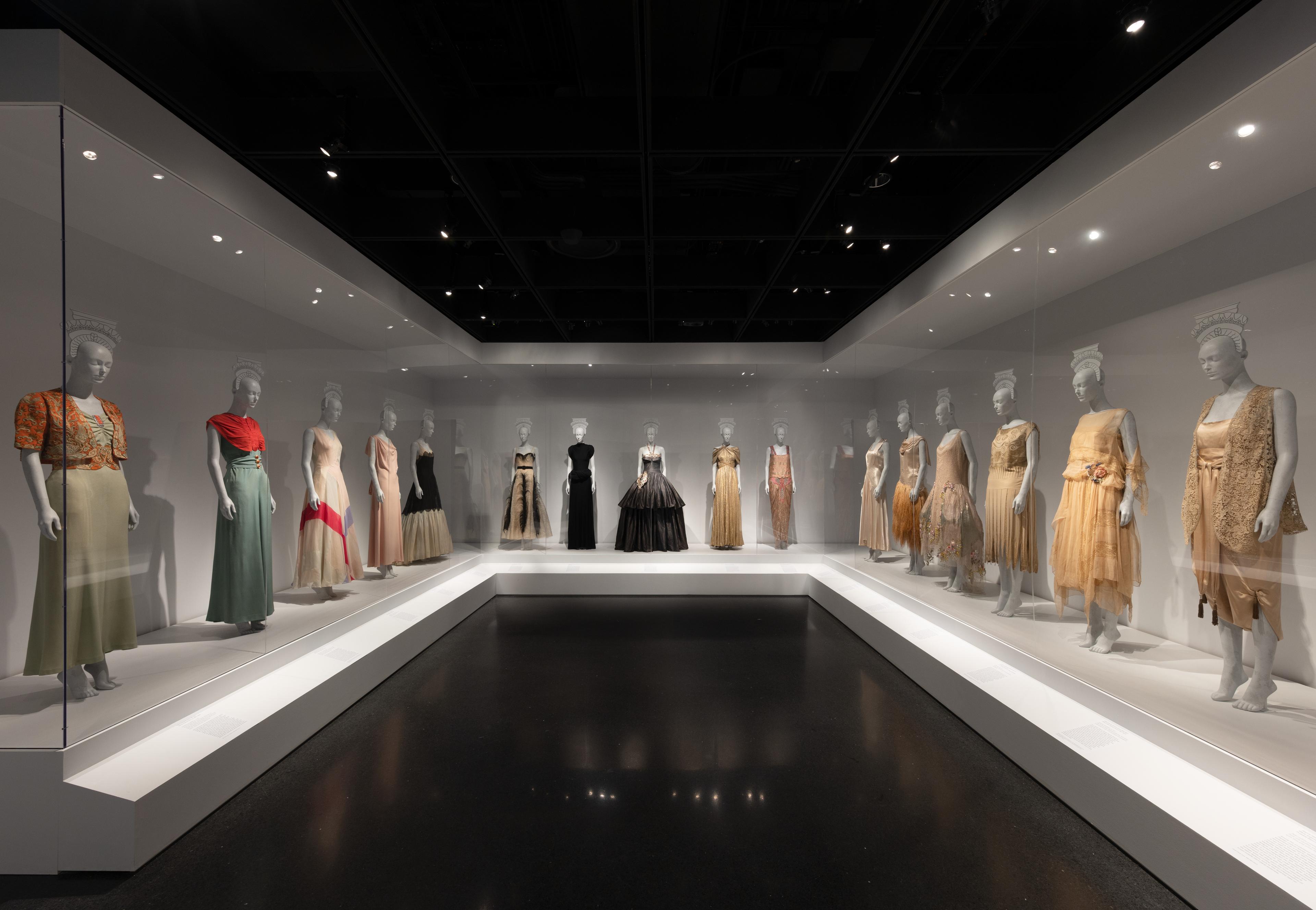
The interwar years in France encapsulate a unique period in which women designers outnumbered their male counterparts in fashion. Some entered the rapidly growing industry by necessity. Others, against challenging odds, established fashion houses of incredible prestige and longevity. Workroom staff who had previously functioned as premières d’atelier (workroom heads), modelistes (model makers), and vendeuses (salespeople) rose through the ranks to become designers or business owners, many assuming positions of leadership in a field that offered unprecedented creative, social, and financial autonomy. Though most women had limited legal agency and lacked access to capital, the investment potential of their skills often attracted entrepreneurs who may not have had the technical or creative expertise to establish a fashion house independently.
As the role of the couturier gained stature, the fate of a business increasingly relied on its figurehead, who was often centered as the identity—and even embodiment—of the house. This growing visibility was a phenomenon that affected designers of all genders, yet it had particular significance for women, marking a dramatic break from the relative obscurity in which dressmakers had labored previously. The pantheon of designers represented in this gallery includes women who trained or worked within the stratified and interconnected constellation of Parisian haute couture houses in existence by the early twentieth century. While several are relatively forgotten today, they all contributed to shaping the direction of modern dress.
III. Agency
Exercising their newfound agency in the twentieth century, women designers in the United States and Europe sought ways to distinguish themselves while also navigating a competitive fashion system. As the U.S. ready-to-wear industry endeavored to escape the hegemony of French haute couture, many of the country’s first widely promoted designers were women. Midcentury innovators such as Claire McCardell and Bonnie Cashin not only advocated for professional autonomy and credit but also introduced elements of ease and freedom to women’s clothing that remain intrinsic to contemporary dress. Boutique culture flourished in cities throughout the 1960s and 1970s, led by designers such as Betsey Johnson, Vivienne Westwood, and Sonia Rykiel who imbued their work with progressive artistic, social, and political ideas. Within the cultivated spaces of these shops, fashion empowered women as both producers and consumers.
Since the 1980s and 1990s designers have increasingly experimented with ways to reclaim the body as a site of creative expression, disrupt conventional standards of beauty, and design inclusively for previously overlooked groups. Many of the women leading fashion today continuously explore new ways to apply a socially conscious ethos to their work that considers the broader impact that our actions have on current and future generations in a globalized society.
Liminal Spaces of Fashion

The creative boundaries between the arts were relatively hazy during the early twentieth century. As fashion became an increasingly attractive pursuit, some women entered the field from the periphery, forming spaces that introduced analogous disciplines like fine art and craft. These small-scale workshops, boutiques, and galleries cultivated collaboration and supported broader artistic networks. Within these environments, designers moved beyond the intimacy of the dressmaker’s shop and rejected the congestion of the department store to provide an equally refined—but frequently more bohemian—take on the luxury of the couture salon. Despite their differences in approach and circumstance—and their liminal status outside both the art world and the contemporary garment industry—these women and their international collaborators were brought together by the connective thread of fashion.
American Women
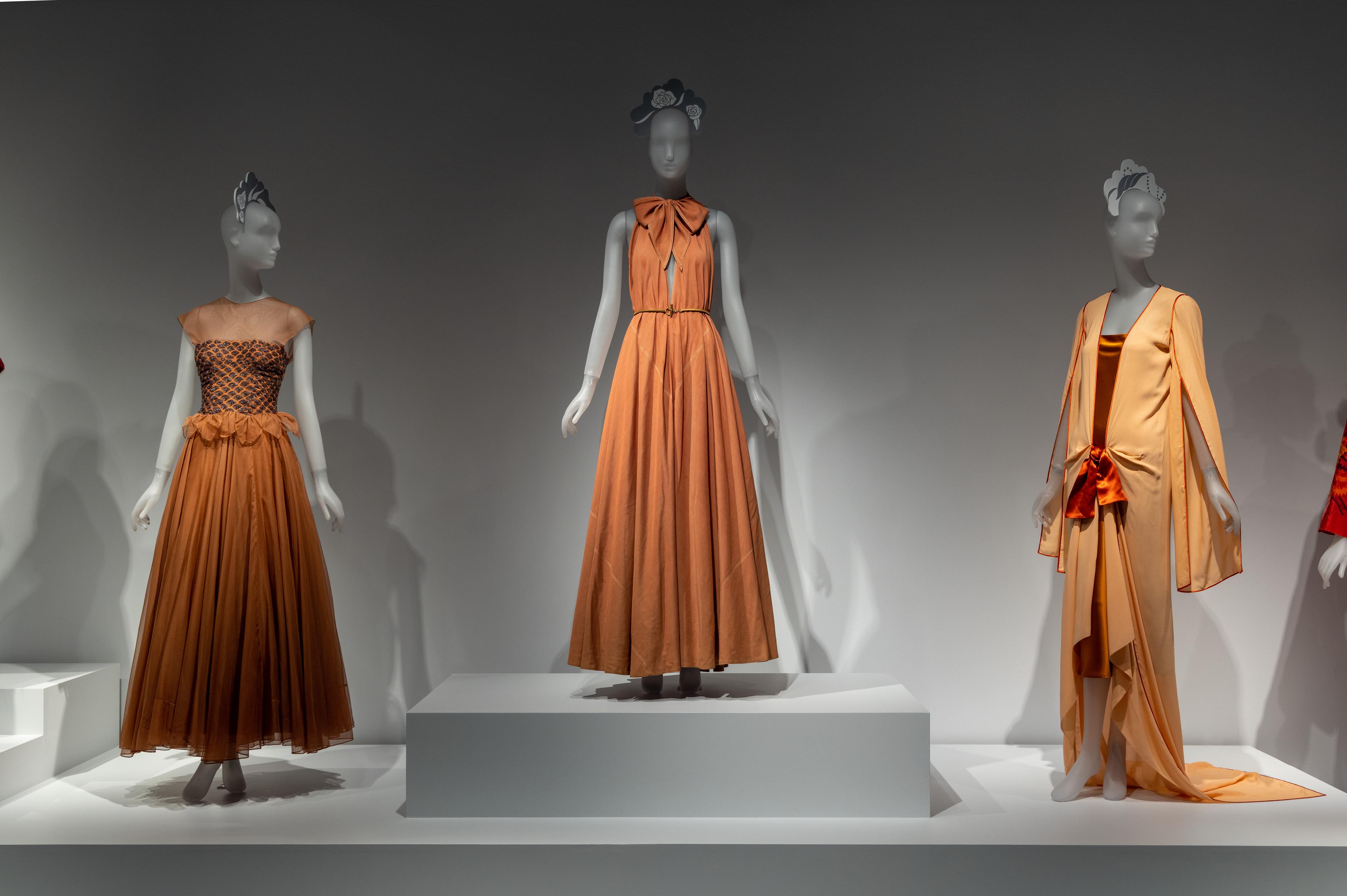
Several industry professionals were instrumental in advancing fashion in the United States during the twentieth century. In 1928, The Fashion Group was founded to promote awareness of domestic businesses and women’s important roles within them. Eleanor Lambert—who established the New York Dress Institute in 1941, New York Press Week in 1942, and the Council of Fashion Designers of America (CFDA) in 1962—partnered with Dorothy Shaver, a formidable fashion executive known for her “American Look” advertising campaigns, to catalyze the merger of The Costume Institute (then known as The Museum of Costume Art) with The Met in 1944. Committed to supporting creativity free of Parisian influences, these organizations not only fostered opportunities for women designers like Elizabeth Hawes, Tina Leser, and Claire McCardell, but were also critical to the conceptualization of a national fashion identity.
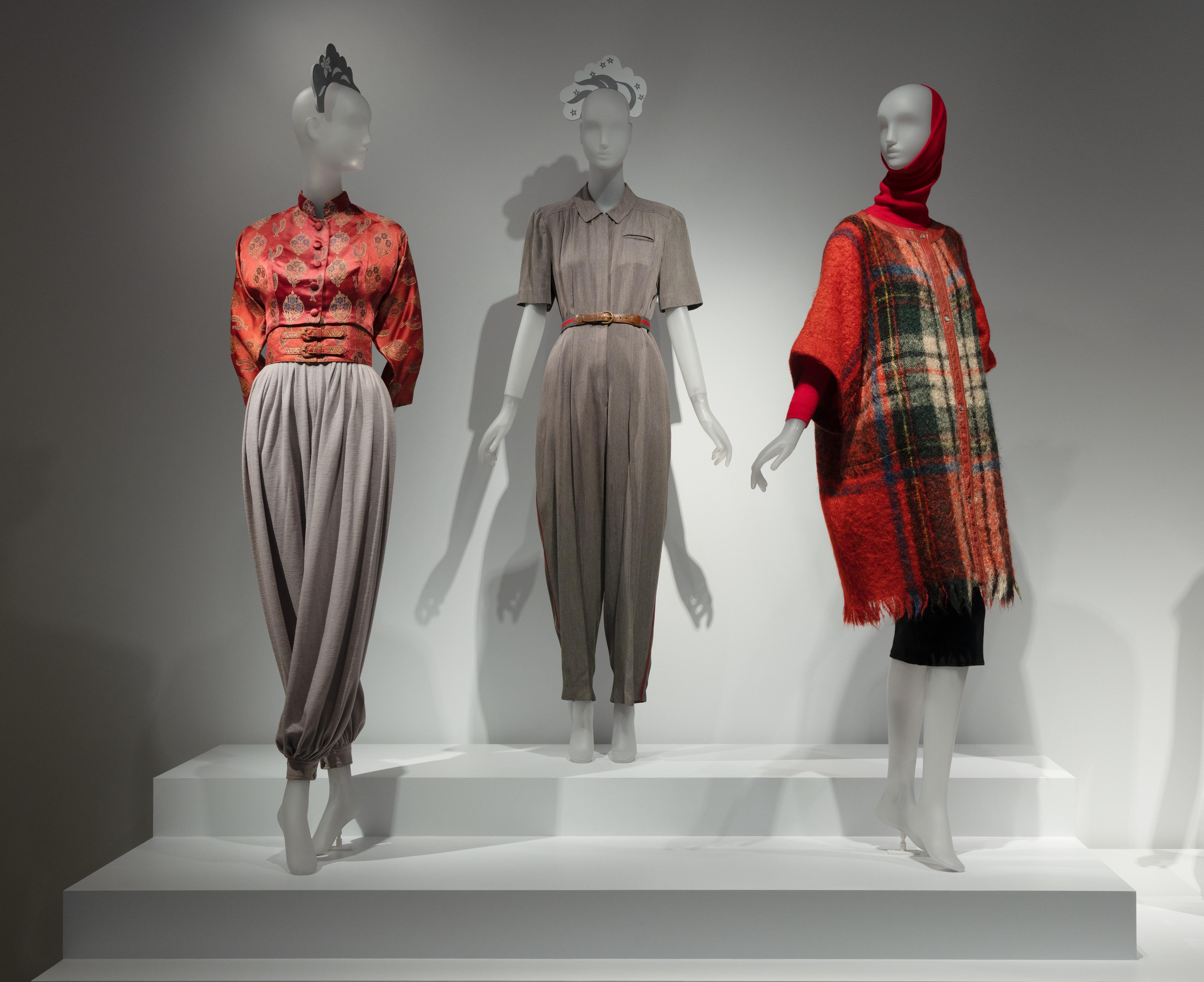
Appropriating Menswear

Trousers and tailored suits for women have been indicators of agency and social mobility in Western culture since the Bloomerite dress-reform movement in the second half of the nineteenth century, whose adherents wore bloomers under their skirts. Though tailoring historically has been gendered as male, women creatives have appropriated the skill as a means of expanding their professional and artistic control. Their designs borrow versatility and functionality from men’s wardrobes and challenge the ways in which women’s dress is traditionally “othered” through excessive ornamentation. Pants and suiting have become relatively ubiquitous in modern women’s dress, but for some wearers today the suit still serves as an emblem of liberation and transgression, or as a signifier of gender performativity.
The Boutique Generation
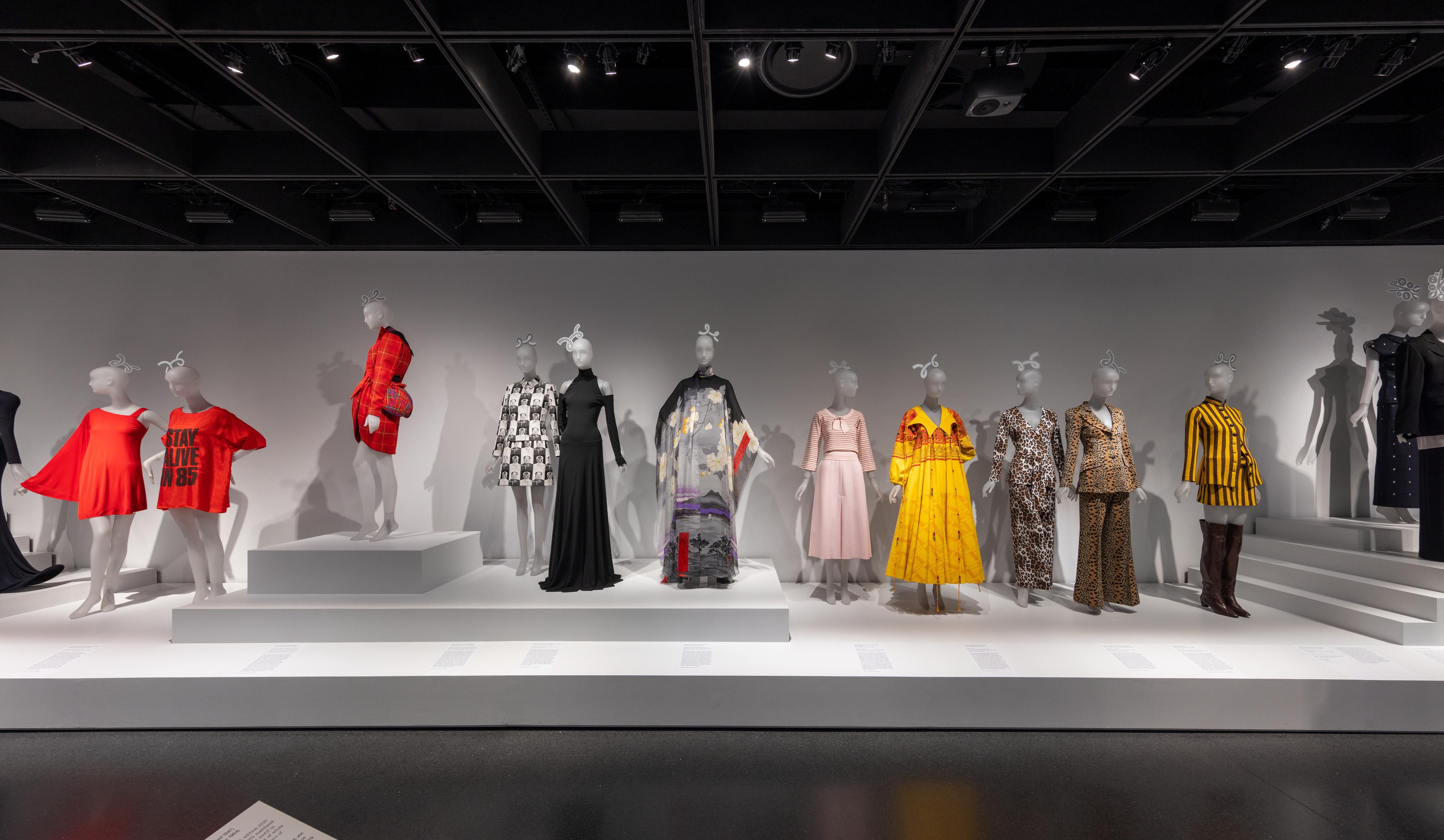
Boutique culture expanded women makers’ access to creative and economic agency, while the emergence of ready-to-wear introduced a system of design in accord with women’s evolving lifestyles and increasing independence. The boutique revolution of the 1960s democratized fashion by appealing to a young generation of women who rejected the formality of custom-made clothing in favor of the ease and affordability of ready-made garments. This model presented an opportunity for designers to bypass the manufacturers and department stores that dominated the industry in the 1950s and create fashions under their own names, selling to and often interacting directly with their customers in cultivated environments of their own making. These boutiques often operated as not only retail stores but also as communal spaces, encompassing a socially conscious ethos that was reflected in the clothes—from rallying political messages to criticism of fashion’s overconsumption.
Reclaiming the Body

In the late twentieth century women designers found ways to subvert conventional gender expectations by redefining the relationship between body and garment. Rather than focusing exclusively on visual impact, they considered how clothing impedes or encourages movement and how dress informs the wearer’s self-awareness and psychological state. Through techniques like selectively exposing or concealing the body, altering its silhouette, and adding new prosthetic shapes, these fashions create a symbiotic relationship between garment and wearer. As Rei Kawakubo stated in 1997: “Body meets dress, dress meets body, and they become one.”
Bodily Agency
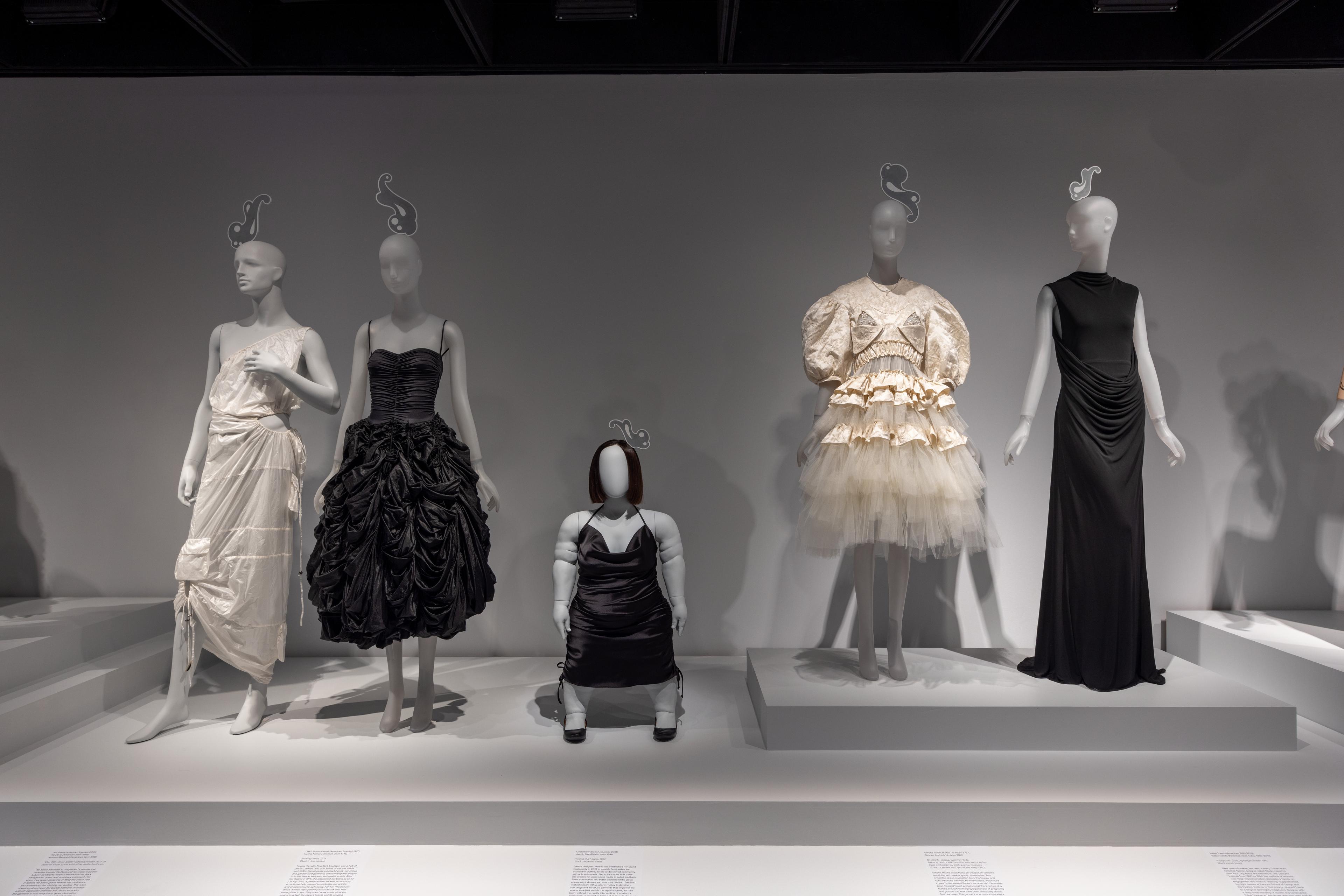
Contemporary designs in this section emphasize how dress has served as a site of political and bodily expression and address lived experiences that have often been overlooked within high fashion, such as pregnancy and disability. While objects from designers like Simone Rocha and Isabel Toledo overtly or subtly engage with previously taboo notions of sex and reproduction, others by No Sesso move beyond the gender binary entirely with creative clothing that can be worn indiscriminately. By introducing elements of choice for the wearer, such as length and style, and allowing for adaptation or customization, these garments can foster forms of physical, creative, social, and even financial liberation.
Empowerment Through Practice

Works in this section exemplify ways in which the ethics and value systems of contemporary designers guide the creative and conceptual possibilities of design. Whether uplifting artisanal makers, crediting partnerships, or introducing new perspectives and dialogues, these women are motivated by broader principles. Their works underscore the mindset of collaboration, sustainability, and plurality that has come to define the spirit of fashion today. The intentionality behind the way that clothing is made has implications that extend far beyond the maker and wearer, and these designers approach their practices in relation to their larger place in the world, whether they are focused on small-scale production or influencing policy at the largest global fashion houses.
IV. Absence/Omission
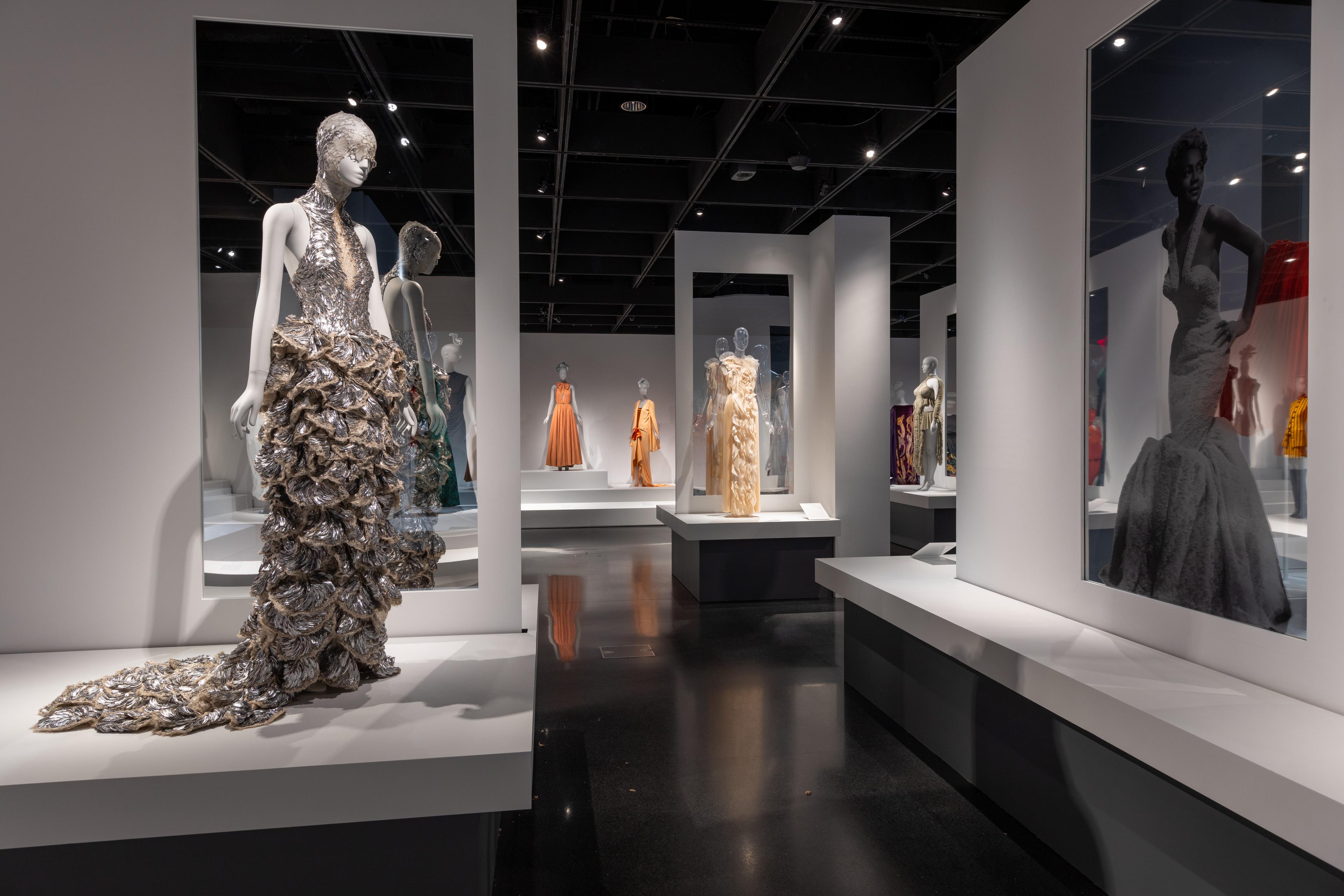
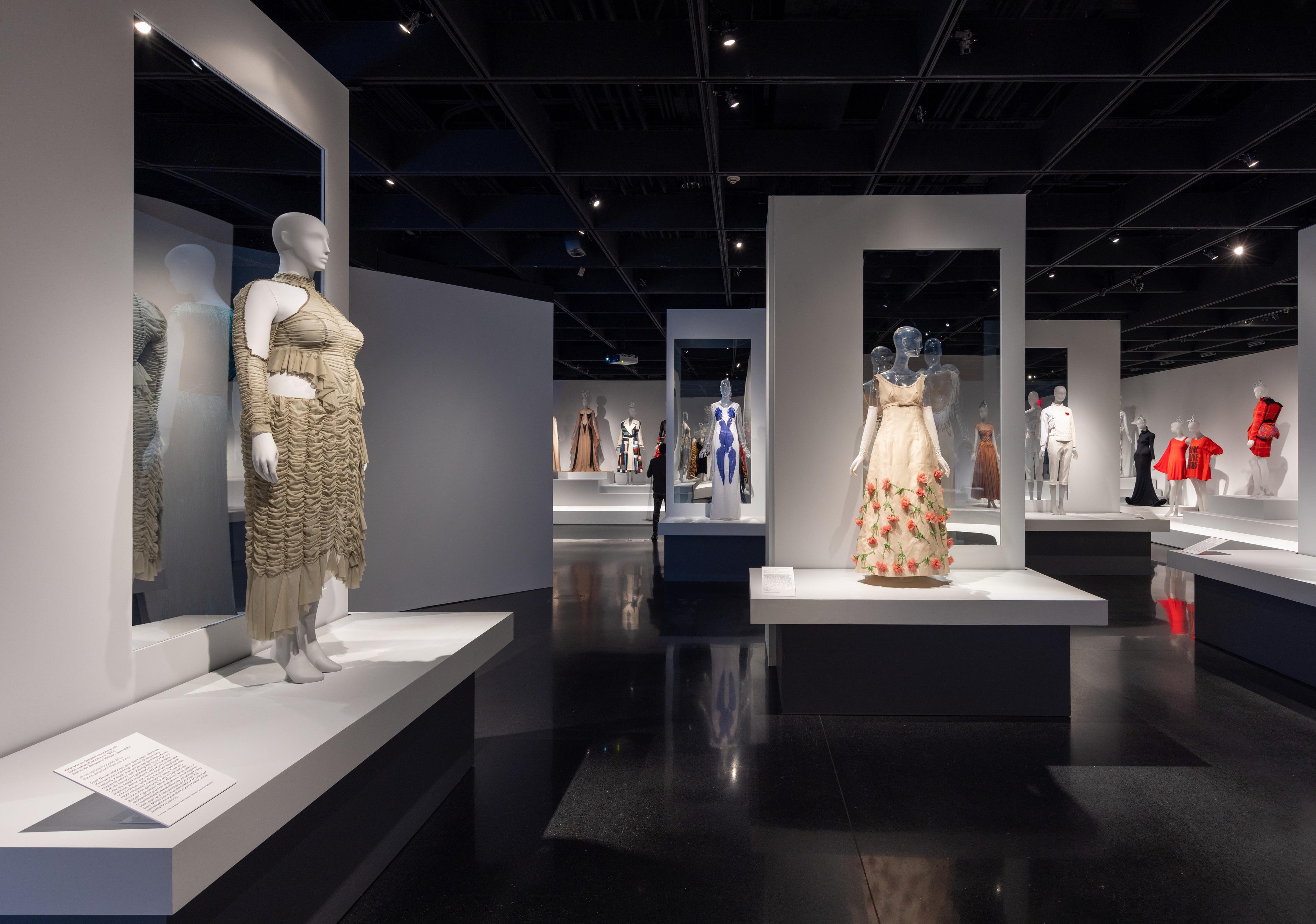
The intergenerational juxtapositions at the center of this gallery build upon themes from throughout the exhibition and introduce types of absence or omission that can occur within museum collections and the canon of fashion more broadly. Such lapses can take many forms, from missing maker attributions, to the lack of extant objects, to poor record keeping, to the prioritization of established narratives. The pieces that survive and enter museum collections typically reflect elite modes of production and consumption, and are prized for their craftsmanship and prestige over notions of cultural resonance and meaning. With clothing, an element of absence is inherent due to the nature of displaying and caring for objects that are designed to be dressed on a figure.
Objects in this section demonstrate some of the factors that have historically influenced fashion. Specifically, they highlight the social and structural inequities women designers have faced; the mythology of the sole creative genius; the limited legal rights and protections historically granted to women; the erasure of designers of color; and the persistent exclusion of bodies deemed incompatible with traditional standards of the feminine ideal. The stories of these designers and objects are not singular and can simultaneously reflect shifting aspects of agency, visibility, and even anonymity throughout time.
